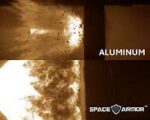Ukraine has reportedly expanded its deep-strike campaign against Russian military-industrial infrastructure using Storm Shadow cruise missiles. A recent strike targeted a chemical facility in Russia’s Tambov region—hundreds of kilometers from the front line—marking one of the deepest confirmed Ukrainian strikes to date using Western-supplied long-range munitions.
Storm Shadow Deployment Marks Strategic Shift
The UK-supplied Storm Shadow air-launched cruise missile (ALCM), with a range exceeding 250 km (some variants up to 560 km), has become a cornerstone of Ukraine’s long-range precision strike capability since its first confirmed use in May 2023. The missile is designed for high-value targets behind enemy lines—such as command centers, logistics hubs, and critical infrastructure—using terrain-following flight profiles and low radar cross-section to evade detection.
The latest strike reportedly hit an industrial chemical site near Kotovsk in Russia’s Tambov Oblast on October 4th, 2025. Satellite imagery and open-source intelligence (OSINT) analysts suggest the facility may have been involved in dual-use production or support for military logistics. While the full extent of damage remains unverified due to limited access and Russian censorship laws prohibiting coverage of domestic strikes, multiple independent sources—including GeoConfirmed and OSINTtechnical—have geolocated the impact site consistent with Storm Shadow’s known operational envelope.
Targeting Industrial-Military Nodes Inside Russia
This attack represents a continuation—and escalation—of Ukraine’s strategy to degrade Russia’s military-industrial base by targeting facilities far from the front lines. Previous confirmed Storm Shadow strikes included targets in Luhansk and Crimea (notably Sevastopol drydock facilities), but this is among the first publicly attributed attacks within internationally recognized Russian territory beyond occupied zones.
Ukrainian officials have not formally claimed responsibility for this specific strike but have previously stated that all facilities contributing to Russia’s war effort are legitimate targets. The UK Ministry of Defence (MoD), which supplies Storm Shadows under strict end-use conditions requiring Ukrainian use only within sovereign or occupied territories, has not commented on this specific incident. However, analysts note that ambiguity around what constitutes “Russian-controlled territory” may provide Kyiv operational leeway.
Storm Shadow Capabilities and Integration with Su-24M
The Storm Shadow/SCALP-EG system was developed jointly by MBDA UK and MBDA France. It carries a BROACH multi-stage warhead optimized for hardened targets such as bunkers or industrial structures. Its guidance suite includes GPS/INS navigation with terrain contour matching (TERCOM) and terminal infrared homing for pinpoint accuracy.
Ukraine employs modified Su-24M bombers as launch platforms after extensive integration efforts supported by NATO partners. These legacy Soviet aircraft were retrofitted to interface with NATO-standard munitions—a complex task involving avionics upgrades and mission planning software adaptation. Ukrainian Air Force crews have demonstrated increasing proficiency in using these systems against strategic targets while minimizing exposure to Russian air defenses through standoff launches from outside contested airspace.
Operational Implications: Deterrence vs Escalation
The strategic rationale behind such deep strikes is multifold:
- Disruption: Targeting logistics nodes or dual-use production sites forces Russia to divert resources toward homeland defense.
- Psychological effect: Demonstrates Ukraine’s ability to project force deep into Russian territory despite lacking long-range ballistic missiles like ATACMS until recently.
- Escalation management: By using precision-guided cruise missiles rather than indiscriminate attacks, Ukraine signals intent to degrade warfighting capacity rather than inflict civilian casualties.
Moscow has responded with intensified air defense deployments around key industrial zones and renewed calls for Western restraint on arms transfers. However, there is no evidence that such strikes have crossed NATO red lines regarding escalation thresholds thus far.
Evolving Western Support for Long-Range Fires
The use of Storm Shadows complements other recent developments in Ukraine’s long-range fires capability:
- MGM-140 ATACMS: The U.S. delivered cluster-warhead variants in late 2024 under classified arrangements; their use was confirmed during October operations targeting forward-deployed Russian helicopters near Berdyansk.
- Neptune R-360 Modifications: Ukraine has reportedly adapted its indigenous anti-ship missile into a land-attack variant with extended range (~400 km).
- Cruise Missile Proliferation: Reports suggest ongoing integration trials involving Taurus KEPD 350 missiles from Germany remain stalled due to political hesitations despite technical feasibility studies already completed by MBDA Deutschland.
Kremlin Response and Strategic Outlook
The Kremlin has officially denied any damage at Kotovsk but simultaneously increased domestic air defense readiness across central regions including Tambov, Lipetsk, Tula, and Ryazan Oblasts—all within reach of Ukrainian cruise missile systems launched from eastern Dnipro or Poltava oblasts using Su-24Ms operating at standoff ranges over Ukrainian territory.
This evolving threat environment may force Russia to further disperse critical production assets or invest more heavily in layered IADS (Integrated Air Defense Systems) away from frontline zones—a costly shift that dilutes offensive capacity elsewhere.
Conclusion: Strategic Depth as Force Multiplier
The October 2025 Storm Shadow strike underscores how precision deep-strike capabilities are redefining operational depth in modern warfare—even for nations without traditional air superiority or large-scale missile arsenals. By leveraging Western-supplied standoff weapons integrated onto legacy platforms like Su-24M bombers, Ukraine continues reshaping the strategic calculus across the theater of operations—and signaling that distance alone no longer guarantees sanctuary for adversary war-making infrastructure.










